Introduction
Plants actually have many ways to move, even though they cannot move place to place like animals. The Venus flytrap(Dionaea muscipula) from the swamps of the southeastern United States is one remarkable example of plant movement. These swift plants trap prey in specialized leaves that can close within only a third of a second[1], thereby allowing them to acquire a nitrogen rich food source in their nutrient poor environment.
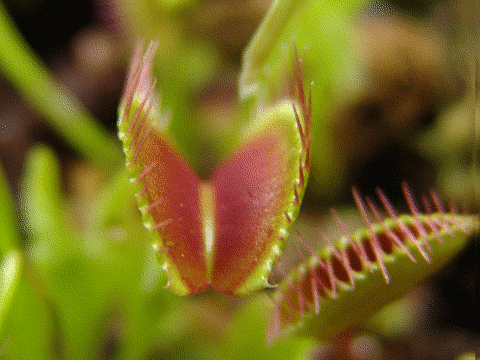
In this post, we'll look at how these unique plants detect prey and move their leaves so quickly to capture prey.
Sensor Hairs
When you take a moment to look at the traps, you can easily see long hairs within the trap. When prey move on the leaves of the trap, they hit these small sensors. It wasn't difficult for early observers to put this together and find out the trap can be triggered by pushing on the hairs.
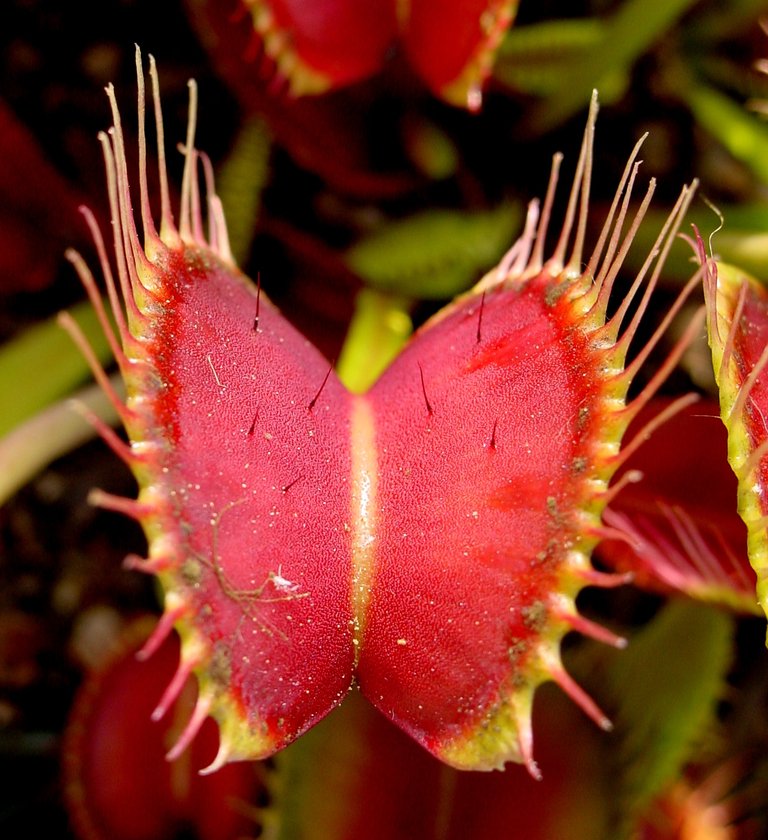
It took some more time for scientists to figure out exactly what conditions are needed to trigger the trap though. Many scientists were involved in the investigation of Dionaea muscipula's behavior, including Charles Darwin [2]. They tried to understand the number and strength of stimuli required to close the trap. At first, there appeared to be contradictory reports on the number of hairs that need to be pushed to close the trap. Some scientists reported that one hair was enough, whereas others reported that it required multiple hairs to be touched.
By 1910, William Brown and Lester Sharp tied together much of the current research by conducting a number of experiments wherein they determined that closure depends on the amount of stimulation and that the required amount decreases under higher temperatures [2]. At normal temperatures, the trap will close when two hairs are touched.
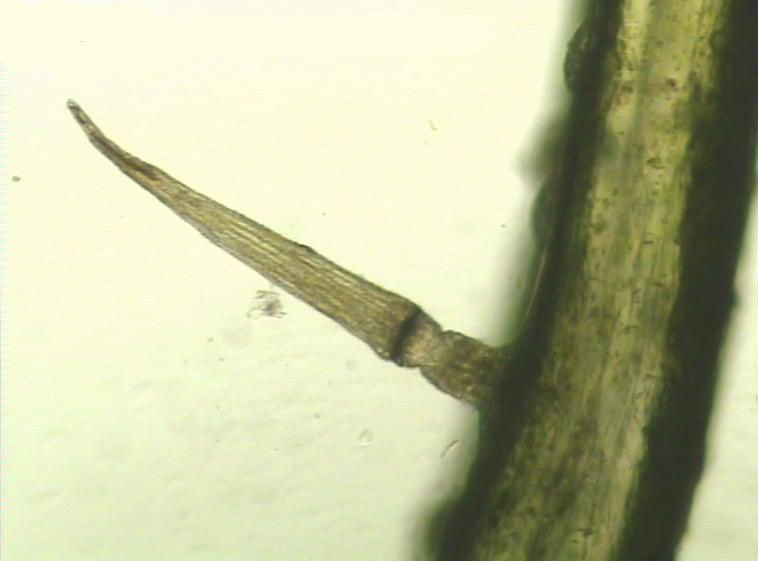
Even though Brown & Sharp now knew in more detail under what conditions the trap would close, they still did not know what the hairs trigger within the plant to cause it to react. In their 1910 paper, they hypothesized that triggering the hairs produced some unknown chemical.
Electrical Signals and Ion Channels
So, a natural question to ask next is what exactly these hairs trigger in the plant. Scientists knew from the very early days that somehow an electrical signal was involved for the trap to close. For example, Brown & Sharp triggered the trap to close by giving it a little shock.
In more recent times, a scientist named Alexander Volkov was able to precisely measure the electrical pulse that happens when the trap is triggered. You can see a figure from one of his papers below[3]:

By the time of this research, we already knew that a number of charged molecules(called ions) were involved in generating electrical signals in plants[3]. Due to a molecular structure unique to plants, electrical signals can flow through multiple cells[3]. This is possible because the cells are connected through small channels called plasmodesmata which form a continuum of cytoplasm called the symplast.
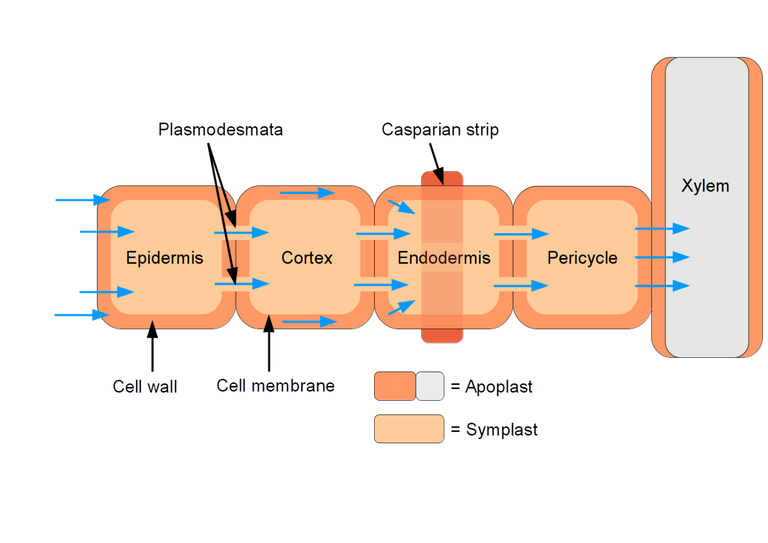
Given this knowledge, it was logical to assume that proteins involved in transporting ions across membranes were vital to close the trap. To find out whether this was the case, Volkov disrupted the proteins allowing ions to flow through cell membranes called ion channels[4]. He noted that when ion channels were disrupted, the speed of the trap decreased. He also noted that when channels involved in transporting water, called aquaporins, were disrupted the speed of the trap decreased as well.
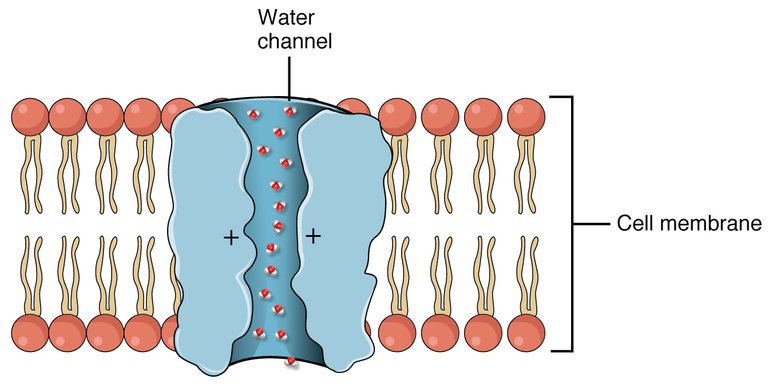
Proposed Model
In order to integrate all of the information, Volkov proposed a model describing how the trap closes called the hydroelastic model [4].
His model views the leaves of the trap as having two distinct layers that can have different levels of water pressure. In its default position, the leaves of the trap will be closed. However, a difference in water pressure between the two layers is used to force the trap open storing energy in process as elastic potential energy. This situation is similar to extending a rubber band or a spring.
After the hairs on the trap are triggered, an electrical pulse is sent through the plant's cells which causes a change in water flow using the aquaporins which react to the pulse. The change in water flow is different in the two different leaf layers. The water pressure in the inner layer decreases, whereas the pressure in the outer layer increases. This change in water pressure causes the leaves to quickly close just like releasing a rubber band, hopefully trapping whatever is inside.
Sources
Images
Venus flytrap closing gif: https://commons.wikimedia.org/wiki/File:Dionaea_muscipula_closing_trap_animation.gif
Picture showing Venus flytrap trigger hairs: https://commons.wikimedia.org/wiki/File:Venus_Flytrap_showing_trigger_hairs.jpg
Microscope image of trigger hair: https://commons.wikimedia.org/wiki/File:Dionaea-muscipula-Ausloeseborste-Mikroskopaufnahme.jpg
Action potential plot: From [3] in references below
Symplast diagram: https://commons.wikimedia.org/wiki/File:Symplastic_and_apoplastic_water_flow_through_root.png
Aquaporin channel diagram: https://commons.wikimedia.org/wiki/File:2625_Aquaporin_Water_Channel.jpg